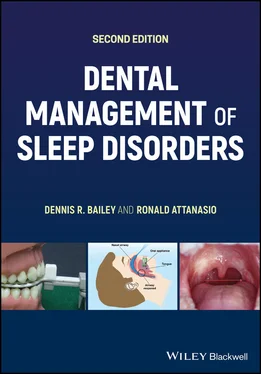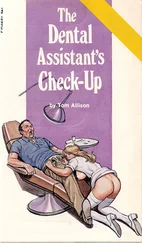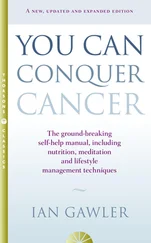Ronald Attanasio - Dental Management of Sleep Disorders
Здесь есть возможность читать онлайн «Ronald Attanasio - Dental Management of Sleep Disorders» — ознакомительный отрывок электронной книги совершенно бесплатно, а после прочтения отрывка купить полную версию. В некоторых случаях можно слушать аудио, скачать через торрент в формате fb2 и присутствует краткое содержание. Жанр: unrecognised, на английском языке. Описание произведения, (предисловие) а так же отзывы посетителей доступны на портале библиотеки ЛибКат.
- Название:Dental Management of Sleep Disorders
- Автор:
- Жанр:
- Год:неизвестен
- ISBN:нет данных
- Рейтинг книги:3 / 5. Голосов: 1
-
Избранное:Добавить в избранное
- Отзывы:
-
Ваша оценка:
- 60
- 1
- 2
- 3
- 4
- 5
Dental Management of Sleep Disorders: краткое содержание, описание и аннотация
Предлагаем к чтению аннотацию, описание, краткое содержание или предисловие (зависит от того, что написал сам автор книги «Dental Management of Sleep Disorders»). Если вы не нашли необходимую информацию о книге — напишите в комментариях, мы постараемся отыскать её.
Dental Management of Sleep Disorders
Dental Management of Sleep Disorders, Second Edition
Dental Management of Sleep Disorders — читать онлайн ознакомительный отрывок
Ниже представлен текст книги, разбитый по страницам. Система сохранения места последней прочитанной страницы, позволяет с удобством читать онлайн бесплатно книгу «Dental Management of Sleep Disorders», без необходимости каждый раз заново искать на чём Вы остановились. Поставьте закладку, и сможете в любой момент перейти на страницу, на которой закончили чтение.
Интервал:
Закладка:
Health Consequences and Related Costs
The impact of sleep disorders on one's health can present in a variety of ways. It is now well recognized that a wide variety of health issues potentially may arise as a result of sleep disorders. In addition, at times an illness or health problem can conversely impact one’s sleep. For the sake of clarity, the one’s of greatest importance and the most frequently encountered will be reviewed here.
The increased risk for CVD and elevated blood pressure associated with SRDB are well documented. The largest and the most cited study, the Sleep Heart Health Study, took place between 1995 and 1998 as a multicenter cohort study with over 6000 people age 40 and above as participants [23]. The results of this study found that sleep apnea along with other SRBDs are risk factors for CVD which is inclusive of myocardial infarction and stroke. A variety of mechanisms are proposed indicating that sleep apnea and CVD are related with elevated blood pressure as the more common finding.
Alteration in metabolic and endocrine function is also associated with an SRDB, the most prevalent of which is type 2 diabetes. It has been found that snoring alone increases the risk for type 2 diabetes independent of any other risk factors [24].
Table 1.1 Common risk factors.
| Sleep‐related breathing disorders |
| Increased incidence with age |
| Frequent and loud snoring |
| Mouth breathing – difficulty in nose breathing |
| Gasping for air during sleep |
| Associated with larger neck and waist size |
| Increases with weight gain |
| Males have greater risk than females |
| Airway obstruction – especially large tonsils and adenoids |
| Hypothyroidism |
| Coexisting cardiovascular disease or hypertension |
| Allergy or asthma |
| Family history |
| Insomnia |
| Increases with age |
| Associated with anxiety and/or depression |
| Associated with pain, headaches, arthritis, temporomandibular Joint (TMJ) symptoms |
| Dissatisfied with one's quality of sleep |
| Females have greater risk than males |
| Substance abuse |
| Perceives health as worse or bad |
| Level of schooling |
| Restless limb syndrome (RLS) |
| Increases with age |
| Worsens over time – follows a chronic course |
| Females greater than males |
| Use of antidepressants |
| Associated with low iron levels |
| Peripheral neuropathy |
| Pregnancy |
| End‐stage renal disease |
| May coexist with sleep bruxism |
Table 1.2 Prevalence of sleep problems with comorbid illness (age 55–84).
Source : Adapted from Foley et al. [21].
| Prevalence of sleep problems by % | Number of comorbidities |
|---|---|
| 36% | None |
| 52% | 1–3 |
| 69% | 4 or more |
Other health issues that impact sleep also need to be recognized. Classically among these are painful conditions, increased stress, and psychological issues such as anxiety and depression. These most often lead to insomnia and a decrease in sleep time, sleep quality, and in many instances an associated increased time in bed.
As has been demonstrated, sleep disorders may potentially increase the risk for a multitude of health problems. It is not an absolute that a given sleep disorder will lead to any one specific health problem. The important issue is to recognize that these health problems may have an underlying sleep disorder as a contributing factor in the development or progression of a health issue ( Table 1.3).
Because of the increased risk for the development of health problems with sleep disorders, there may be an associated increase in healthcare costs as well. It is well documented that the presence of a sleep disorder may drive up the cost of healthcare in general. It has been estimated that untreated sleep apnea may add $3.4 billion in medical costs [25]. At this time, it is unclear what the actual savings in medical costs are with the management of sleep apnea. In a study of 31 patients diagnosed with CVD and who had sleep apnea, when they adequately managed the apnea there was a reduction in the need for hospitalization related to the cardiovascular illness [26]. In addition, it is recognized that an association with the severity of the sleep disorder may be related to increased healthcare expenditures.
The costs of healthcare are increased by the lack of attention to the specific sleep disorder. A 1998 study demonstrates that 10 years prior to the actual diagnosis of sleep apnea the patients that were eventually diagnosed with sleep apnea when compared to the matched controls incurred nearly double the costs for healthcare and were hospitalized more [27, 28]. This demonstrates that in many instances the sleep disorder precedes the onset of the specific health issue or consequence. If the sleep disorder is not discovered, then the attention to the related health issue takes precedence. This may then lead to an increase in expenditures for various testing, imaging, physician visits, hospitalizations, and medication or prescription usage.
Along with the health issues that may arise there is also an impact on one's QOL. Studies that look at QOL measures clearly demonstrate that patients with a sleep disorder feel that their QOL is poorer than those without apnea [29, 30]. In addition, the QOL of the bed partner is also impacted. When the SRBD is improved, both the patient and the bed partner may experience an improvement in their QOL [31].
The Dental Perspective
More than ever, the dentist is compelled to provide more than just dentally related services and as such is becoming involved with not only the oral health of the patient but also with their overall health. A commentary in the Journal of the American Dental Association (JADA) called for an increase in the education of the dentist in biological and medical sciences [32]. In this chapter, a direct reference to medical topics that may be related to the dentist that appeared in JADA from 2004 to 2006 included such topics as diabetes, heart disease, CVDs, and sleep apnea. In another commentary by Dr. Michael Glick in JADA describes the potential for the dentist to inform patients about risk factors for CVD is possible [33], as well as many other health and medically related disorders.
Table 1.3 Common health issues associated with sleep disorders.
| Painful conditions | Headaches |
| Arthritis | Fibromyalgia |
| Anxiety or depression | Hyperthyroidism/hypothyroidism |
| Pregnancy | Gastroesophageal reflux disease (GERD) or acid reflux |
| Medication usage | Cardiovascular disease |
| Hypertension | Diabetes |
| Obesity | Periodontal disease |
Regardless of the role the dentist assumes, the initial action needs to start with the recognition of those who may be at risk for or have a health problem that may have an underlying sleep disorder as a contributing factor. Having an awareness of these relationships has the potential to be beneficial to the overall health of people and to improve their QOL.
Conclusion
The dentist now has an increasing role in the recognition of a patient who may be at risk for a sleep disorder, especially those that are most commonly encountered. This has been supported and emphasized by the American Dental Association (ADA) in a number of ways but specifically related to the recognition and management of SRBD [34, 35]. In 2019, the ADA published a guide for the dentist regarding screening for diabetes by assessing blood glucose and A1c [36]. This is an additional means by which the dentist is able to contribute to the overall health of the patient, similar to screening for hypertension. Once the condition is recognized the appropriate referral for more definitive management is indicated. Epidemiologic data supports the increasing awareness of the relationship of sleep disorders and other health issues. Clinical management and decision‐making now emphasize sound evidence‐based documentation that relies on epidemiologic studies to assist in determining the coexistence of a sleep disorder that in turn are impacting the health of the public and the patients we serve.
Читать дальшеИнтервал:
Закладка:
Похожие книги на «Dental Management of Sleep Disorders»
Представляем Вашему вниманию похожие книги на «Dental Management of Sleep Disorders» списком для выбора. Мы отобрали схожую по названию и смыслу литературу в надежде предоставить читателям больше вариантов отыскать новые, интересные, ещё непрочитанные произведения.
Обсуждение, отзывы о книге «Dental Management of Sleep Disorders» и просто собственные мнения читателей. Оставьте ваши комментарии, напишите, что Вы думаете о произведении, его смысле или главных героях. Укажите что конкретно понравилось, а что нет, и почему Вы так считаете.











